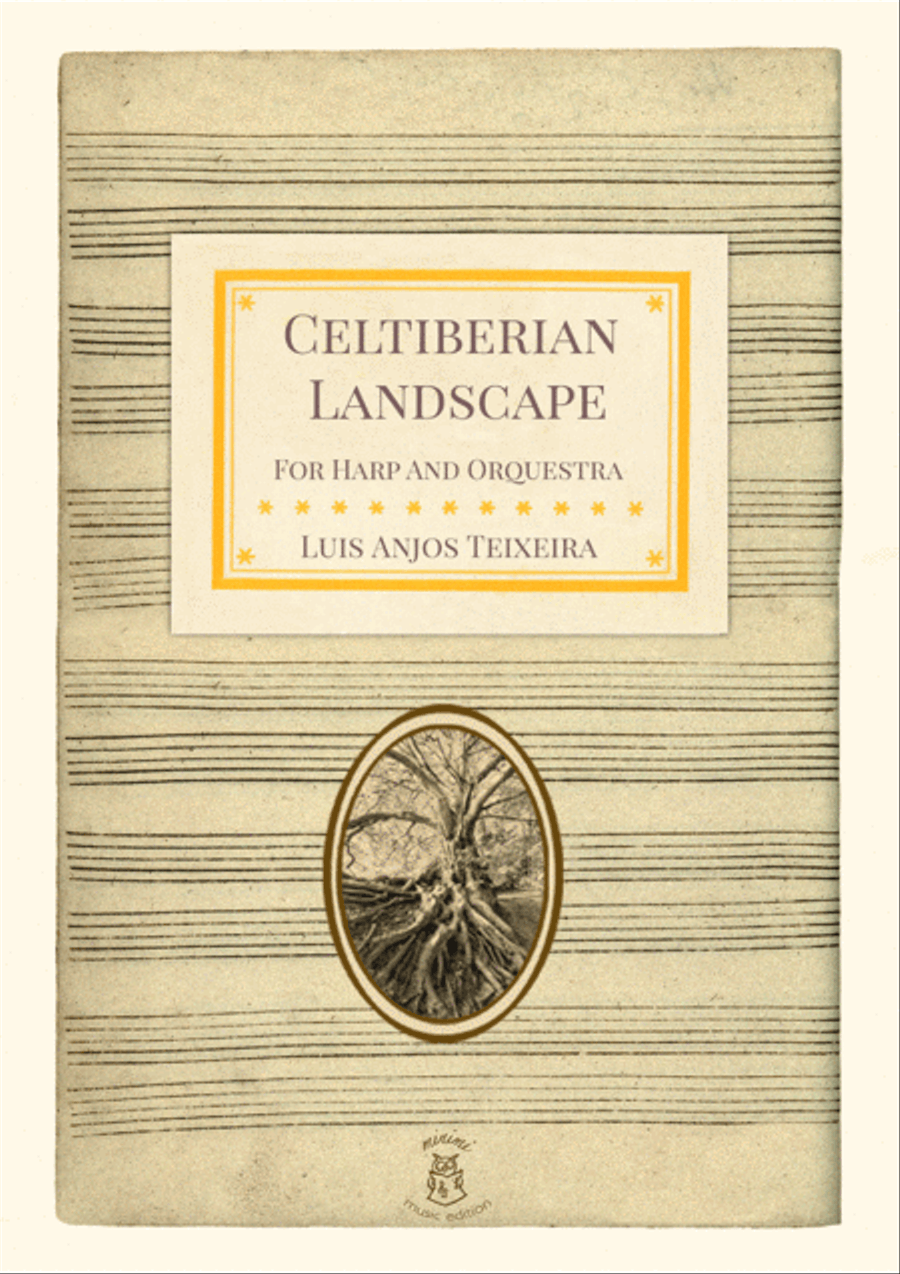Full Orchestra - Level 2 - Digital Download SKU: A0.889427 Composed by Luis Anjos Teixeira. Concert,Contemporary,Standards. Score and parts. 74 pages. Luis Anjos Teixeira #4725435. Published by Luis Anjos Teixeira (A0.889427). „Celtiberian Landscape For Harp, Choir and Symphonic Orchestra All the woodwind solo parts and the Horn can be doubled. The chamber option for a minimum number of soloists would be, 1 Flute 1 Oboe 1 English Horn 1 Eb Clarinet 1 Bb Clarinet 1 Fagotte 1 Kontra Fagotte 1 F Horn 2 C Trumpet 2 Trombone 2 Tuba Timbale Bells, „Glockenspiel or Piano Percussion: gong, bass drum, snare, splash, triangle. Harp Celesta or Piano Violin I Violin II Viola Cello DoubleBass DoubleBass Solo Soprano Alto Tenor Bass In this PDF file, for each voice in the score there is an individual part ready to print. Included in this file is also the full score for the choir with individual parts. There is no text to be sung, so in the sense of a vocalizo „oh and „ah can be used „ad lieb by the singers. For the bells there is an extra optional score that could be eventually used by a keyboard instrument. The percussion could be performed by 3 or 4 musicians. It consists of a set of cymbals „G, A and C, a splash or crash, an open triangle, a snare drum, One or 2 Gongs and a bass drum. For each voice in the ensemble score there is an individual part ready to print and an optional standard one. The parts are very easy to perform. The piece is can easily be adjusted to different situations. It is perfect for school ensembles and mixed groups of beginner students and advanced ones. A little story about this piece In my early teens I dreamed in my sleep that I met a very nice gentleman, in a beautiful garden. At the time I did not now that the man in my dream was my „genetic Grandpa himself, I had never seen a picture from him, only many years later after this dream. Now back to the Dream. Grandpa toke me from the garden to a House full of sculptures and art work. There was also a room with 3 great pianos, sat to perform on 3 different stages. Family life size portraits where hanging on a corridor. Another room was full of swords and ancient family weapons. In the end of the dream a dangerous Entity approached the house, Grandpa disappears and I had to leave the place in a hurry without being noticed. I climbed up the house and went hiding on the celling. I could than see a middle aged, middle-Lower class lady coming in the House, she was very stiff, all dressed in black like a widow. It was a very weary feeling, I woke up to never forget this dream. About 20 years later I was in that garden. It was really abandoned and I spend much of my time hanging there, I wrote a lot of music in this garden. I knew about The owner of this garden, he was living not so far away from me. Curious I decided to visit him. He leaved in the house that I dreamed of and he was actually my Father but I did not know that he was my Father and either did he knew about me being his son. He died shortly after we met. His name was Pedro Augusto Franco Dos Anjos Teixeira and my Grandpa was Artur Gaspar Dos Anjos Teixeira. Thanks to Claudia Eppelt for the all the Love and cover design. Special Thanks to Grandpa, Nina and Stray Queen Mimi, Carlinhos, Maria Pontinha, Maria Joaninha, Schwarzenegger, Maria Koboldinha. For all Living beings on Earth, for all our Ancestors, Thank You for all of You All Your Love and Compassion. Love Forever. Disclaimer: The score was written on Finale and the sound file was p.
